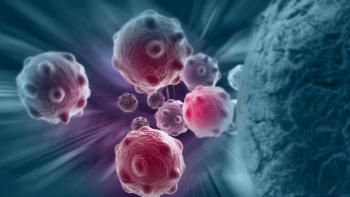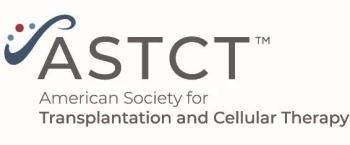
New Developments in Multiple Myeloma
In this podcast from the 2014 American Society of Hematology Annual Meeting, we discuss some of the new developments in multiple myeloma.
As part of our coverage of the 56th American Society of Hematology (ASH) Annual Meeting, taking place in San Francisco from December 6th to December 9th, we are discussing multiple myeloma study results from the meeting with Noopur Raje, MD, director of the multiple myeloma program at Massachusetts General Hospital and associate professor at Harvard Medical School in Boston. Dr. Raje is an author on five multiple myeloma abstracts presented at the meeting and takes part in both laboratory research and clinical trials.
-Interviewed by Anna Azvolinsky
Cancer Network:Let’s start with any highly anticipated multiple myeloma trials that were presented at the meeting. Were there any such trials and talk about the results?
Dr. Raje: Sure, there are certainly a couple. It’s always exciting to be at ASH because we get the best of the best, and the nice thing is that every year we have something new to report even for multiple myeloma and it keeps the excitement growing. This year, specifically, at ASH, we have the long-awaited ASPIRE trial, reported on Sunday. This trial is a large randomized trial to confirm the efficacy of the phase II data on which carfilzomib was initially approved. Carfilzomib was approved as an accelerated approval based on a phase II study, and the ASPIRE trial is a confirmatory trial. The ASPIRE trial is a large phase III randomized trial that combined carfilzomib with lenalidomide and dexamethasone. The control arm is lenalidomide and dexamethasone, which would be considered standard of care for relapsed disease. This is for patients who had one to three lines of prior treatment, and they are randomized to get either carfilzomib plus lenalidomide and dexamethasone, or lenalidomide and dexamethasone alone.
The data, presented by one of my colleagues from Mayo Clinic in Scottsdale, Dr. Keith Stewart, are certainly long-awaited and anticipated. The progression-free survival of patients getting the triplet-that is carfilzomib, lenalidomide, and dexamethasone-lived without evidence of their multiple myeloma for a significantly longer period of time, close to 8 months, which is really very reassuring, suggesting that even at the time of relapse, using combination approaches such as three drugs is certainly better than two drugs as long as patients can tolerate it. Based on the abstract, the regimen is generally well-tolerated. What is very encouraging about this is that the regimen significantly increased progression-free survival.
Cancer Network:Are there any data presented at this year’s meeting that you think would be practice-changing?
Dr. Raje: This trial will certainly demonstrate that patients should receive combinations. Whether or not everyone should be getting carfilzomib plus lenalidomide and dexamethasone is obviously not going to be clear from this clinical trial but at least it will give experience in a substantial number of patients that the triplet actually works and works very well. And not only works very well but keeps the disease at bay for a long time. A lot of times, how we treat people with relapsed myeloma really depends on what treatments they have had before and what they have relapsed on. So, in a certain subset of patients, certainly, this combination will be very useful. Will it be practice-changing for everyone with multiple myeloma? I think it’s hard to say that. One has to balance what patients have had before, the toxicities one would predict, and also balance that with efficacy. So, I don’t necessarily know if this will be practice-changing across the spectrum of all myeloma. What it will, however, do is encourage people to use carfilzomib in combination with some of the other newer agents, and we know that by doing so we really get very high response rates with this combination.
Cancer Network:In terms of early-stage drug data, is there anything notable presented here, either combinations or monotherapies?
Dr. Raje: I don’t know if I want to call it early stage, but I certainly think there will be excitement for the monoclonal antibody against CD38 called daratumumab. The phase I data with daratumumab and also another compound, SAR650984, have shown pretty high response rates for single agents, close to 40% or a little over 40%. At this year’s ASH, what you will see are combinations of these CD38-directed antibodies, the SAR compound or daratumumab, in combination with lenalidomide. And with that combination, at least with the phase II data, we are seeing extremely high response rates, to the tune of about 80% or more, which I think is absolutely fantastic in a relapsed, refractory population.
As far as monoclonal antibodies are concerned, a few years back we heard about elotuzumab, an antibody directed against CS1, and that has completed its registration trial and we are waiting to hear about the final results of that data. But until then, the next new monoclonal antibodies for multiple myeloma are daratumumab and the SAR compound. These are the only two monoclonal antibodies in my mind that have shown single-agent activity as well, so that is really exciting for multiple myeloma. And obviously for the combination, we are seeing a doubling of the response rate, so we are very excited and encouraged by the early data. We almost think that we’ve finally gotten to a point where we can, like in the lymphoma world, finally have monoclonal antibodies that are very active.
Cancer Network:You were part of a trial of the vaccine, PVX-410, that was tested on a small cohort in smoldering multiple myeloma patients, which is being presented this year. Can you talk briefly about the results and the potential utility of such a vaccine in these earlier-stage patients?
Dr. Raje: Sure. The whole concept of treating myeloma early is a more novel concept and is a concept that has really taken root in the myeloma community. Smoldering myeloma is precursor myeloma, which we believe will eventually become multiple myeloma, and when we talk about curing the disease, what better time to attack it than at an early stage when we know it is going to transform into the active disease. That is where the excitement lies, to try to treat patients with smoldering myeloma. I think in the past few months we have actually tightened our criteria of how we would define smoldering myeloma, and we’ve also been able to identify certain risk factors within smoldering myeloma that predispose patients to develop multiple myeloma more than others. Within smoldering myeloma, there are types and subtypes and some of them have a higher risk of developing multiple myeloma-those are the folks we are targeting.
The PVX story is, I think, an exciting approach, and part of the reason is that we are using a novel mechanism, a vaccination called PVX-410. What we are trying to do here is by vaccinating patients, we are training the patient’s immune system to recognize myeloma that is foreign to their body and then try to develop the immune system so that they can start rejecting the myeloma. From a concept standpoint, I think this is absolutely fantastic because we are at a threshold in oncology in general, looking at immunotherapies. Looking at immunotherapy in this smoldering population is particularly exciting because as you all know, once you have active disease that needs treatment, your immune system is not fully intact and it’s questionable whether the immune system can mount an immune response. Trying to catch a patient in the smoldering stage is great because we believe that they have a reasonable immune system, and then teaching them to fight off their cancer before they actually develop myeloma is a good concept.
This PVX vaccine is a tri-peptide vaccine that we have never had in multiple myeloma before and what it does is recognize three different proteins that are commonly present on multiple myeloma cells. So, it recognizes CD38, which is how myeloma cells are recognized in the bone marrow, and it targets CS1, which is the same protein that is targeted by the monoclonal antibody elotuzumab. And finally, the third protein is XBP1, both the intact and spliced form. And we have demonstrated how significant this protein is to myeloma. The concept is that by giving patients this vaccine, they will recognize these proteins as foreign and try to reject them. We have done the first phase of the study already. This is a very designer-specific trial, which is why it’s not that many patients. The majority of the patients could mount an immune response to the vaccine. That is the first step: We had to demonstrate whether you can recognize these proteins as foreign and whether the immune system can wake up to these antigens. We are continuing to do this clinical trial as we speak.
In the second phase, we want to improve the immune response even more. Those of you who take care of myeloma patients know that the drug we use to try to help people’s immune systems is lenalidomide, so the second phase of the trial is to give patients the vaccine with the addition of lenalidomide to get an even better immune response than we get with the vaccine alone. Encouragingly, we are seeing nice immune responses in our very early-phase clinical trial with PVX-410.
Cancer Network:Thank you so much for joining us today, Dr. Raje.
Dr. Raje: You are very welcome. Thank you.
Newsletter
Stay up to date on recent advances in the multidisciplinary approach to cancer.

















































































